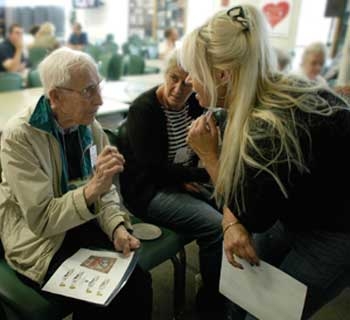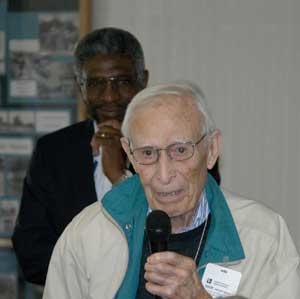Lab employees celebrate 'Flying Tigers'
In early 1941, it didn't take a psychic to know the United States was going to join the war in the Pacific. Many in the U.S. had long believed the war as inevitable and were taking steps very similar to those taken before the Great War.
Before the U.S. entered The Great War, some of our young flyers joined the Lafayette Escadrille and flew fighter airplanes on behalf of the French. And in the year before Pearl Harbor, 90 members of the army, navy and marine air corp arrived in Assam, India and began operations flying supplies into China and taking the fight to the Japanese. The group, the 1st American Volunteer Group, quickly relocated to Burma (now Myanmar) to be closer to the action. While they were changing their base of operations, they picked up a nickname, The Flying Tigers, and the Walt Disney Company created the distinctive design for the nose of their P-40 fighters.
On last Friday morning (Sept. 23 in the West Cafeteria, one of the surviving fighter pilots from the Flying Tigers and a delegation of 24 relatives and friends visited the Lab as were hosted by the Lawrence Livermore Armed Forces Veterans Association. Tommy Smith, emceed the event and noticed that the parallel between the Lab's mission to ensure national security and the mission of the Flying Tigers. Chelle Clements, the chair of the Lab's veteran association, welcomed the delegation and introduced Debbie Ward, the daughter of two veterans who met and fell in love during their service in China. Ward's father was a pilot with the Flying Tigers and her mother was an army nurse.
When answering the question, "How were you recruited?" Thompson reminded the audience the actual situation facing so very many young men. "Times had been hard for quite some time," Thompson said, referring to the Great Depression. "Young men from all over America wanted to do something, anything, especially if it seemed like an adventure. And war seemed like a good idea ... until they started to shoot back at you." Thompson also reminded the audience that compromises had to be struck for the U.S. to engage in a world war. "There were probably four of us who didn't belong in the service under any condition whatsoever, real 4F types. But that's not how they ran things back then. Entire cities were emptied of young men and middle aged men."
The Flying Tigers originally were soldiers paid by the Chinese Army. Then, when the U.S. entered the war, they were repatriated into the U.S. services. Less than one year after Pearl Harbor, the exploits of the Flying Tigers were mythologized in the movie," Flying Tigers" starring John Wayne in his first role in a movie set during World War II. And that was the first of five movies about the Flying Tigers.
Thompson's daughter, Tracy, had some things to say about her father: "My father has always made it very clear he hates war, that there's nothing glamorous or romantic about it. He's told me many times that shooting people from an airplane isn't especially heroic, especially when compared to soldiers who are eye-to-eye with the enemy. I only found out very recently that my father crashed one of his airplanes. He's never thought there was anything heroic about winding up face down in a muddy field."






